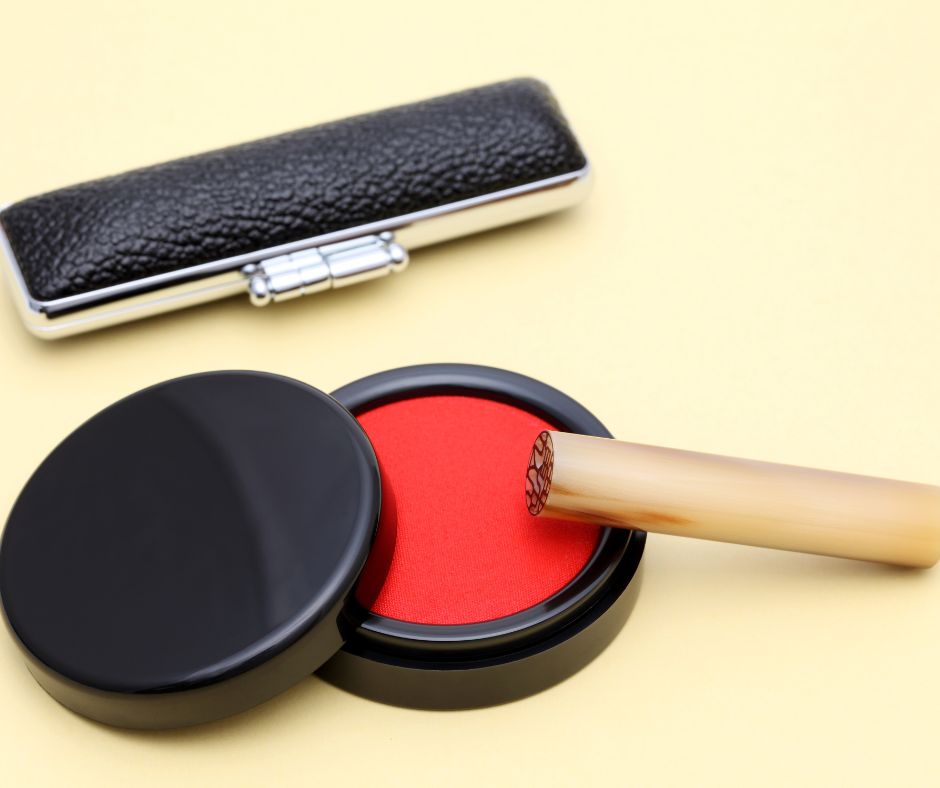Ever wondered what those Japanese characters in red ink at the corner of a document stand for? It is a hanko or inkan, which serves as a personal stamp in Japan because signing one’s name by pen isn’t as popular compared to other countries.

Although Japan is slowly adapting to foreign norms and a handwritten signature is accepted in some transactions, such as signing a delivery, you still need a hanko for more official documents, such as buying a house or car.
3 types of hanko
Before we get started on the process of registering a hanko, it is important to understand that not all hankos are created equally, so to speak. There are three main types of hanko, which I was introduced to when we bought a car, and the agent asked for multiple inkans for the numerous forms I had to fill out.
The first is a “mitome-in” which is used for casual, informal acceptance or acknowledgment, like signing neighborhood notices. These are often mass-produced and, if you have a Japanese last name, can be purchased ready-to-use at 100-yen stores. These rubber stamps with a built-in ink pad are non-official seals and can’t be used for opening bank accounts or more formal contracts.

The next hanko is the “ginko-in,” which is mainly for identity verification purposes; hence, it’s used for bank account creation. Take note that you can only have one ginko-in registered on your account, so if you lose said hanko, you will need to register a new one. I’ve always wondered how the bank knew I used a new ginko-in during a transaction after losing my registered one, but they knew and asked me to fill up another form for the new hanko.
The ginko-in is a middle-sized stamp, about 13.5 to 15mm in diameter, with a designated ink pad (not built-in) on the case, or you can purchase a separate ink pad. It is used for approving automatic withdrawals on your account (monthly utility charges, mortgage payments, and so on) as well as in-person withdrawals at the bank.
Lastly, you have the “jitsu-in,” which is one’s registered and most important hanko. What separates a jitsu-in from a ginko-in is that the former has a certificate proving it has been registered at the city hall or local government office where you reside. Although there are no restrictions on the shape or font style of the carving, a jitsu-in must fit a square about 8mm to 25mm in size, which is the allocated space for seals on official contracts or documents.
Another key point with purchasing your one jitsu-in is longevity. It is advised not to skimp on the quality because you want this seal to last many years, such as 35 years, for a typical housing loan in Japan. The registered jitsu-in is one of the requirements for proving your ownership of an asset, so it should be stored properly.

Process of registering a jitsu-in
Your jitsu-in is quite fancy because not only does it get an official certificate, but an accompanying ID, or a seal registration card, with varying designs from each city or ward.
First, you need to check out the jitsu-in rules and requirements from your local government office (often found on the official website). This ensures you have the correct format and typeface before paying as much as ¥25,000 for top-of-the-line, hand-carved inkans.
With your hanko in hand, you can go to your municipal office and fill out a seal registration form (印鑑登録申請書 “inkantouroku shinsei sho”). Be ready with identity verification details such as your name, birthday, address, and contact number, as well as the hanko which you will stamp on the form.
The next step is to submit the completed form with an accompanying ID. Some offices might ask for a processing fee, usually around ¥200. Once you have the seal registration card, you can use that to request a seal registration certificate at any time in case you need to submit one for a contract.

Losing/changing a hanko for official purposes
Treat your ginko-in and jitsu-in as valuable and linked to your identity. If you happen to lose either of the inkans, remember to inform the bank (for ginko-in) and government offices concerned so they can invalidate the previous hanko and prevent any risks of identity theft. After going through the process of canceling the validity of your old hanko, you will need to go through the registration again.
It is a common dilemma among foreigners staying in Japan whether they need a hanko or not. The short answer is yes, even though Japan is so technologically advanced but still relies on fax machines. You will definitely need one if you are staying in the country long term and plan on making big-ticket purchases or entering loans and contracts. At the very least, you can get a ginko-in, which can be used at a bank and for other casual documents, to make your stay more convenient.



